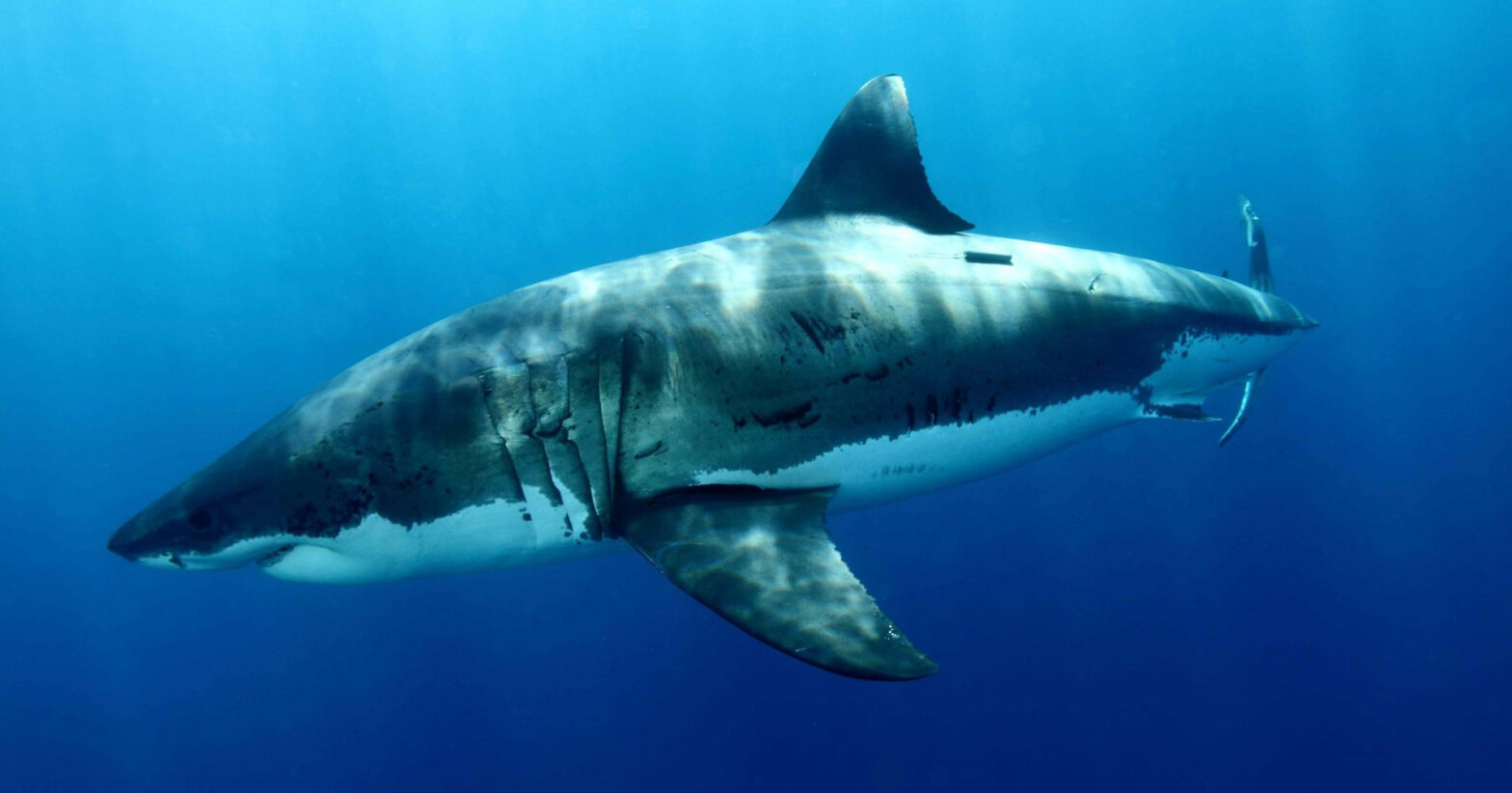The great white shark isn’t exactly man’s greatest buddy, with its razor-sharp teeth, pitch-black eyes, and 2,000-pound bulk. And, regardless of how frequently — and horrifyingly — the species is represented in renowned films and media, great white shark facts are far more intriguing than fiction.
Despite the great white shark’s reputation, or notoriety, most people know very little about the life of these remarkable animals. Even in the scientific community, which has not been polluted by Jaws, there are many unsolved concerns.
Take a deep breath, gang, as we delve into the great white shark facts, one of the ocean’s deadliest predators!

1. Great Whites Sharks are very curious.
Great white sharks are naturally curious creatures who may occasionally lift their heads out of the water to see what’s going on, a habit known as spy-hopping. Great white sharks are one of the few fish species that notice what is going on outside of the water. As a result, scientists all throughout the world can easily identify these sharks since their fins are all different.
2. The Great White Shark is the world’s largest predatory fish.

They average roughly 4.5 metres in length, with the tallest ones reaching a whopping 7 metres. Many consider Deep Blue, a great white shark, to be the largest of its species ever documented. Many consider Deep Blue, a great white shark, to be the largest of its species ever documented. However, a well-known researcher has questioned that assertion. “First and foremost,” “Deep Blue has never been objectively measured or weighed.” “That would necessitate being photographed while being painted with a precisely calibrated paired laser system or being physically set down next to a tape measure.” That has never happened before.” What are your thoughts on this? Do you think Deep Blue might be the largest white shark on this planet?
3. Great Whites Sharks fins are like fingertips

Small injuries to the dorsal fins of great white sharks result in notches of varied diameters on the fins’ edges. Shark fins are one-of-a-kind, and scientists in South Africa are utilising them to identify individual sharks without the use of tags. Although the bumps and grooves heal and vary over time, the process is gradual enough that individual sharks may be tracked just by looking at images of their fins. This technique can now be automated thanks to recent improvements – it’s an exciting time to be a shark scientist!
4. They only bite boats once in a while, sinking them.

Great white sharks have been known to bite boats as long as 10 metres (33 feet) and even sink rubber boats that are easily penetrated by their razor-sharp teeth and powerful jaws. They’ve knocked people overboard by slamming into the boat from the stern. A big shark jumped entirely onto the South African fishing boat Lucky Jim in 1936, knocking a crewman into the sea.
5. There are not at the top of the food chain.
Orcas are being blamed for the disappearance of sharks in False Bay, and while they are not the primary cause, they are a factor. Type A orcas, such as Port and Starboard off the coast of South Africa, are known to eat sharks. Orcas in False Bay eat sevengill sharks, great white sharks, and bronze whalers. Although there is evidence that orcas hunt sharks in pairs to extract their livers, eyewitnesses have seen single orcas predate on sharks as well.
6. Humans are rarely attacked by Great White sharks.
When compared to the amount of people who swim in the ocean each year, shark attacks on humans are extremely infrequent, and real deaths are even rarer. There was an average of 82 unprovoked attacks and 4 fatalities every year between 2014 and 2018. Despite its rarity, the Great White shark is responsible for the majority of deadly unprovoked shark attacks on people.
7. The Great White Shark is on the verge of extinction.

Because their numbers have been steadily declining in recent years, they have been labelled as vulnerable. This is due to human actions, with overfishing and becoming entangled in fishing gear being two of the most significant contributors.
8. We’ve never seen a great white couple mate or have a baby.
Despite our best attempts, nothing is known about great white whales’ reproductive lives. Females give birth to two to ten live pups after about a year of gestation, according to autopsy. Adult sharks bite each other as part of the mating process, as evidenced by scars on their bodies (a behaviour in sharks). We also know that baby great whites are maintained in nurseries in areas where there is plenty of food, though we don’t know where all of them are.
9. South Africa was the first country to put great white sharks under protection.

Fishing and exploitation of great white sharks became outlawed in South Africa in 1991, making it the first country to do so. In reality, it wasn’t until 2005 that shark conservation became a global priority, with numerous shark species being gradually added to CITES, the international treaty governing trade restrictions on protected animals, since then.
10.They live longer than we think & eat their siblings in the womb.
Shark lifespans were formerly estimated to be as little as 23 years; however, research has found that they can live to be 70 years old or more. Shark embryos will consume their weaker or smaller siblings while still in the womb. To keep growing, they devour the mother’s unfertilized eggs. This means that sharks that survive the womb are the most powerful and likely to survive.
Did you find this article interesting? Are you ready to take the next step?
But don’t know how can you help?
No worries!
Join us in our journey of Save The Seven Seas and create an impact to save marine life.


